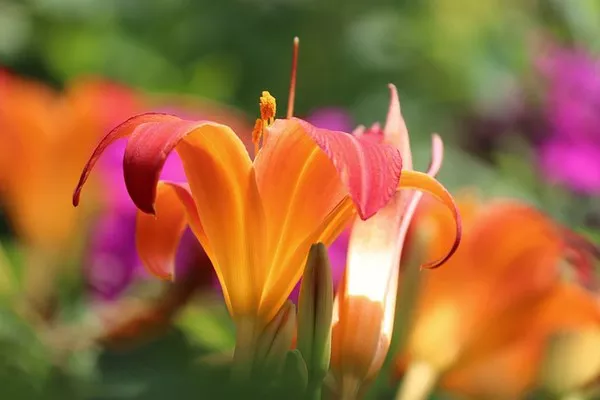In the world of flora, few flowers possess the captivating allure and rich symbolism of the iris. With its delicate petals and vibrant hues, the iris has captured the imagination of cultures across the globe for centuries. From ancient mythology to modern horticulture, the iris holds a profound significance that extends far beyond its aesthetic appeal. In this comprehensive exploration, we delve into the multifaceted meaning of the iris flower, uncovering its cultural, historical, and botanical significance.
A Brief Overview of the Iris Flower
Before delving into its symbolism, it’s essential to understand the iris flower itself. Belonging to the Iridaceae family, the iris is a genus of flowering plants that encompasses over 300 species, distributed throughout temperate regions of the world. These exquisite blooms are characterized by their distinctive six-lobed flowers, which come in a myriad of colors ranging from deep purple and vibrant blue to delicate white and sunny yellow. The iris typically blooms in late spring to early summer, adding a splash of color to gardens, meadows, and wetlands alike.
SEE ALSO: Pressing Iris Flowers: A Comprehensive Guide
Cultural Symbolism of the Iris Flower
Across various cultures and civilizations, the iris holds a special place in folklore, mythology, and symbolism. One of the most enduring associations of the iris is with the ancient Greeks, who named the flower after Iris, the messenger goddess of the rainbow. According to Greek mythology, Iris served as the link between the heavens and the earth, traversing the rainbow to deliver messages from the gods to mortals. Thus, the iris became a symbol of communication, eloquence, and divine blessings.
In addition to its association with the divine, the iris also holds significance in Christian iconography, where it symbolizes purity, virtue, and the Virgin Mary. Renaissance artists often depicted the Virgin Mary with irises in religious paintings, using the flower to convey her purity and grace.
In Japanese culture, the iris, known as “shobu,” carries a different symbolism. Here, the iris is associated with courage and strength, derived from its ability to thrive in marshy areas. The iris is often depicted in Japanese art and literature as a symbol of resilience and determination, inspiring individuals to overcome adversity.
The Language of Flowers: Iris Symbolism in Victorian Era
During the Victorian era, the language of flowers, also known as floriography, flourished as a means of expressing sentiments and emotions through floral arrangements. In this intricate language, each flower carried its own symbolism and meaning, allowing individuals to convey messages subtly and symbolically.
The iris played a prominent role in the Victorian language of flowers, symbolizing faith, hope, and wisdom. Its striking appearance and regal bearing made it a popular choice for bouquets and floral arrangements, especially for occasions such as weddings and funerals, where its symbolism carried profound significance.
Botanical Significance of the Iris
Beyond its cultural and symbolic meanings, the iris also holds botanical significance, making it a subject of fascination for botanists and horticulturists alike. The iris is renowned for its diverse species and cultivars, which exhibit a wide range of colors, patterns, and forms.
From the elegant bearded irises with their velvety falls and intricate beards to the graceful Siberian irises with their slender, arching stems, each variety of iris offers its own unique charm. Horticulturists have devoted centuries to hybridizing and cultivating irises, resulting in a vast array of cultivars that grace gardens, parks, and botanical collections around the world.
In addition to their aesthetic appeal, irises also play a vital ecological role, serving as pollinator magnets and providing habitat and sustenance for a variety of wildlife. Many species of iris are adapted to thrive in wetland habitats, where they help stabilize soil, filter water, and support biodiversity.
Modern Applications and Cultivation of Irises
Today, the iris continues to captivate gardeners, artists, and flower enthusiasts worldwide. With the advent of modern horticultural techniques and breeding programs, new varieties of irises are constantly being introduced, offering novel colors, patterns, and forms for enthusiasts to enjoy.
In addition to their ornamental value, irises also hold practical applications in various industries. The rhizomes of certain iris species contain compounds with medicinal properties, making them valuable in traditional herbal medicine. Furthermore, iris extracts are used in perfumery and cosmetics, adding their distinctive fragrance and color to a variety of products.
Conclusion
In conclusion, the iris flower embodies a rich tapestry of symbolism, cultural significance, and botanical beauty. From its mythological associations with goddesses and divine messengers to its role in Victorian floriography and modern horticulture, the iris has left an indelible mark on human culture and imagination.
Whether adorning a bridal bouquet, gracing a garden bed, or inspiring an artist’s canvas, the iris continues to enchant and inspire with its timeless beauty and profound symbolism. As we contemplate the delicate petals and vibrant hues of this exquisite flower, let us remember the wisdom, courage, and resilience it represents, serving as a timeless reminder of the enduring power of nature and the human spirit.


